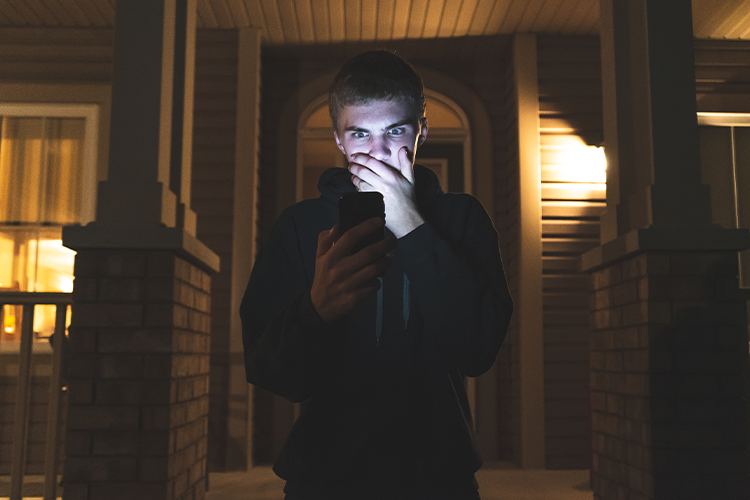Online First
As we move into our fourth issue of The New Circle, we are taking a new approach by posting new articles as they become available. By releasing articles prior to an entire magazine edition, we hope to bring you the most recent thinking of The New Circle’s feature editors.
For the upcoming issue and the series of articles within it, we will explore the theme of uncertainty in the lives of at-risk children and teens.
- Traumatic Brain Injury in Justice-Involved Youths: A Call to Action
 A recent article (2022) published in the Juvenile Justice Information Exchange, highlighted an upcoming study in Florida which focuses on gauging the prevalence and impact of moderate and severe Traumatic Brain Injury (TBI) in justice-involved youths. In this projected three-year study, aims include determining which treatments might help those youth complete their education, succeed at work, and prevent them from cycling in and out of detention.
A recent article (2022) published in the Juvenile Justice Information Exchange, highlighted an upcoming study in Florida which focuses on gauging the prevalence and impact of moderate and severe Traumatic Brain Injury (TBI) in justice-involved youths. In this projected three-year study, aims include determining which treatments might help those youth complete their education, succeed at work, and prevent them from cycling in and out of detention. - Social Media and Teens: Does it Negatively Impact Mental Health and Wellbeing?
 Recent surveys show that 9 out of 10 American teenagers have a smartphone and many spend hours per day using it to watch videos, play games, and communicate via social media. As the use of smartphones and social media has become increasingly more common among teens, the impact of technology has also become an increasing concern among parents and those who work with youths. Perhaps this is even more true given the global pandemic, as the closures of schools as well as social distancing measures have led to limited access to in-person social opportunities.
Recent surveys show that 9 out of 10 American teenagers have a smartphone and many spend hours per day using it to watch videos, play games, and communicate via social media. As the use of smartphones and social media has become increasingly more common among teens, the impact of technology has also become an increasing concern among parents and those who work with youths. Perhaps this is even more true given the global pandemic, as the closures of schools as well as social distancing measures have led to limited access to in-person social opportunities. - When Home Is Not a Safe Place
 The results of a New York Times survey of 7,700 high school students was released earlier this year, confirming what most professionals working with at-risk adolescents already knew: School and other community programs provide a feeling of connectedness and a buffer to what is happening at home for these teens. The pandemic removed these supports from teens with problem homes, causing them to feel less safe. In this article, Dawn Pflugradt and David Prescott look at the ongoing consequences of the pandemic, and what professionals can do to help alleviate these effects and improve outcomes.
The results of a New York Times survey of 7,700 high school students was released earlier this year, confirming what most professionals working with at-risk adolescents already knew: School and other community programs provide a feeling of connectedness and a buffer to what is happening at home for these teens. The pandemic removed these supports from teens with problem homes, causing them to feel less safe. In this article, Dawn Pflugradt and David Prescott look at the ongoing consequences of the pandemic, and what professionals can do to help alleviate these effects and improve outcomes. - Teenagers, Digital Sexual Behavior, and the TEAMS Approach
 In this most recent and very timely article, Alex Rodrigues addresses how professionals can respond to adolescents exposed to online sexual behaviors using the TEAMS approach. TEAMS is an acronym that spells out the steps that can help professionals prevent over- as well as under-reacting to these often complicated behaviors. Rodrigues also offers helpful resources for professionals seeking to learn more.
In this most recent and very timely article, Alex Rodrigues addresses how professionals can respond to adolescents exposed to online sexual behaviors using the TEAMS approach. TEAMS is an acronym that spells out the steps that can help professionals prevent over- as well as under-reacting to these often complicated behaviors. Rodrigues also offers helpful resources for professionals seeking to learn more. - Coping with Deep Uncertainty
 David Prescott explores both the uncertainty of the present times and what professionals can do for themselves and others. Even as the pandemic wanes in influence, answers are in short supply when it comes to at-risk children and teens. To this end, Prescott offer four areas where professionals can place their focus as we all move forward towards whatever the new normal might be.
David Prescott explores both the uncertainty of the present times and what professionals can do for themselves and others. Even as the pandemic wanes in influence, answers are in short supply when it comes to at-risk children and teens. To this end, Prescott offer four areas where professionals can place their focus as we all move forward towards whatever the new normal might be.
